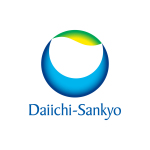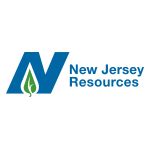- Agreement represents second collaboration between Daiichi Sankyo and AstraZeneca for a Daiichi Sankyo DXd antibody drug conjugate (ADC)
- AstraZeneca to pay Daiichi Sankyo up to $6 billion in total consideration, including a $1 billion upfront payment and up to an additional $5 billion contingent upon achievement of future regulatory and sales milestones
TOKYO, MUNICH & BASKING RIDGE, N.J.–(BUSINESS WIRE)–Daiichi Sankyo Company, Limited (hereafter, Daiichi Sankyo) announced today that it has entered into a global development and commercialization agreement with AstraZeneca (LSE, STO, NYSE: AZN) for Daiichi Sankyo’s DS-1062, a TROP2 directed DXd antibody drug conjugate (ADC), currently in phase 1 clinical development for non-small cell lung cancer (NSCLC) and triple negative breast cancer (TNBC).


Daiichi Sankyo and AstraZeneca will jointly develop and commercialize DS-1062 worldwide, except in Japan where Daiichi Sankyo will maintain exclusive rights. Daiichi Sankyo will manufacture and supply DS-1062.
This agreement represents the second global ADC collaboration between the two companies following a similar agreement in March 2019 for Daiichi Sankyo’s ENHERTU®, a HER2 directed DXd ADC.
“DS-1062, one of our lead DXd ADCs that will form a pillar of our next mid-term business plan, has the potential to become a best-in-class TROP2 ADC in multiple tumors, including lung and breast cancers,” said Sunao Manabe, Representative Director, President and CEO of Daiichi Sankyo Company, Limited. “This new strategic collaboration with AstraZeneca, a company with extensive experience and significant expertise in the global oncology business, will enable us to deliver DS-1062 to more patients around the world as quickly as possible. As we have done with ENHERTU, we will jointly design and implement strategies to maximize the value of DS-1062.”
“We see significant potential in this antibody drug conjugate in lung as well as in breast and other cancers that commonly express TROP2,” said Pascal Soriot, Chief Executive Officer, AstraZeneca. “We are delighted to enter this new collaboration with Daiichi Sankyo and to build on the successful launch of ENHERTU to further expand our pipeline and leadership in oncology. We now have six potential blockbusters in oncology with more to come in our early and late pipelines.”
Financial Terms
Under the terms of the agreement, AstraZeneca will pay Daiichi Sankyo an upfront payment of $1 billion, of which $350 million is due upon execution, $325 million after 12 months and $325 million after 24 months. Contingent payments of up to $5 billion include $1 billion for achievement of future regulatory milestones, and $4 billion for sales-related milestones. Total payments under the agreement have the potential to reach up to $6 billion.
Daiichi Sankyo and AstraZeneca will share equally development and commercialization costs as well as profits from DS-1062 worldwide, except for Japan. Daiichi Sankyo is expected to book sales in U.S., certain countries in Europe, and certain other markets where Daiichi Sankyo has affiliates. AstraZeneca is expected to book sales in other markets worldwide, including China, Australia, Canada and Russia.
The upfront payment and regulatory milestones will be booked as revenue over the period in which Daiichi Sankyo has contractual performance obligations under this collaboration. Impact on Daiichi Sankyo’s consolidated financials for fiscal year ending March 31, 2021 will be announced at an appropriate time in the future. The collaboration is expected to enhance the corporate and shareholder value for Daiichi Sankyo over the mid- to long-term.
About TROP2
TROP2 (trophoblast cell-surface antigen 2) is a transmembrane glycoprotein that is overexpressed in many cancers including up to 80 percent of patients with triple negative breast cancer.[1] High TROP2 expression also has been identified in a majority of NSCLCs.2 Research indicates that high TROP2 expression is associated with cancer cell growth and proliferation and poor patient survival.3 TROP2 is recognized as a promising molecular target for therapeutic development in various cancers.4
About DS-1062
DS-1062, a TROP2 directed ADC, is one of three lead DXd ADCs in the oncology pipeline of Daiichi Sankyo.
ADCs are targeted cancer medicines that deliver cytotoxic chemotherapy (“payload”) to cancer cells via a linker attached to a monoclonal antibody that binds to a specific target expressed on cancer cells. Designed using Daiichi Sankyo’s proprietary DXd ADC technology, DS-1062 is comprised of a humanized anti-TROP2 monoclonal antibody attached to a topoisomerase I inhibitor payload by a tetrapeptide-based linker with a customized drug-to-antibody ratio (DAR) of four to optimize the benefit-risk ratio for the intended patient population.
Preclinical studies have demonstrated that DS-1062 selectively binds to the TROP2 receptor on the surface of a tumor cell. It is proposed that DS-1062 is then internalized into the cancer cell where lysosomal enzymes break down the tetrapeptide-based linker and release the DXd payload.
DS-1062 is currently being evaluated in a phase 1 trial in patients with advanced solid tumors that are refractory to or relapsed from standard treatment or for whom no standard treatment is available. The study is currently enrolling patients with unresectable advanced NSCLC and unresectable/advanced or metastatic TNBC.
DS-1062 is an investigational agent that has not been approved for any indication in any country. Safety and efficacy have not been established.
About the Collaboration between AstraZeneca and Daiichi Sankyo
Daiichi Sankyo and AstraZeneca entered into a global collaboration to jointly develop and commercialize ENHERTU (a HER2 directed ADC) in March 2019, and DS-1062 (a TROP2 directed ADC) in July 2020, except in Japan where Daiichi Sankyo maintains exclusive rights. Daiichi Sankyo is responsible for manufacturing and supply of ENHERTU and DS-1062.
ENHERTU (trastuzumab deruxtecan; fam-trastuzumab deruxtecan-nxki in the U.S. only) currently is approved in the U.S. and Japan for the treatment of adult patients with unresectable or metastatic HER2 positive breast cancer who received two or more prior anti-HER2-based regimens based on the DESTINY-Breast01 trial, and is under accelerated assessment in the EU for a similar potential indication.
U.S. FDA-Approved Indication for ENHERTU
ENHERTU is a HER2 directed antibody and topoisomerase inhibitor conjugate indicated for the treatment of adult patients with unresectable or metastatic HER2 positive breast cancer who have received two or more prior anti-HER2-based regimens in the metastatic setting.
This indication is approved under accelerated approval based on tumor response rate and duration of response. Continued approval for this indication may be contingent upon verification and description of clinical benefit in a confirmatory trial.
|
WARNING: INTERSTITIAL LUNG DISEASE and EMBRYO-FETAL TOXICITY
|
- Interstitial lung disease (ILD) and pneumonitis, including fatal cases, have been reported with ENHERTU. Monitor for and promptly investigate signs and symptoms including cough, dyspnea, fever, and other new or worsening respiratory symptoms. Permanently discontinue ENHERTU in all patients with Grade 2 or higher ILD/pneumonitis. Advise patients of the risk and to immediately report symptoms.
|
- Exposure to ENHERTU during pregnancy can cause embryo-fetal harm. Advise patients of these risks and the need for effective contraception.
|
Contraindications
None.
WARNINGS AND PRECAUTIONS
Interstitial Lung Disease / Pneumonitis
Severe, life-threatening, or fatal interstitial lung disease (ILD), including pneumonitis, can occur in patients treated with ENHERTU. In clinical studies, of the 234 patients with unresectable or metastatic HER2-positive breast cancer treated with ENHERTU, ILD occurred in 9% of patients. Fatal outcomes due to ILD and/or pneumonitis occurred in 2.6% of patients treated with ENHERTU. Median time to first onset was 4.1 months (range: 1.2 to 8.3).
Advise patients to immediately report cough, dyspnea, fever, and/or any new or worsening respiratory symptoms. Monitor patients for signs and symptoms of ILD. Promptly investigate evidence of ILD. Evaluate patients with suspected ILD by radiographic imaging. Consider consultation with a pulmonologist. For asymptomatic ILD/pneumonitis (Grade 1), interrupt ENHERTU until resolved to Grade 0, then if resolved in ≤28 days from date of onset, maintain dose. If resolved in >28 days from date of onset, reduce dose one level. Consider corticosteroid treatment as soon as ILD/pneumonitis is suspected (e.g., ≥0.5 mg/kg prednisolone or equivalent). For symptomatic ILD/pneumonitis (Grade 2 or greater), permanently discontinue ENHERTU. Promptly initiate corticosteroid treatment as soon as ILD/pneumonitis is suspected (e.g., ≥1 mg/kg prednisolone or equivalent). Upon improvement, follow by gradual taper (e.g., 4 weeks).
Neutropenia
Severe neutropenia, including febrile neutropenia, can occur in patients treated with ENHERTU. Of the 234 patients with unresectable or metastatic HER2-positive breast cancer who received ENHERTU, a decrease in neutrophil count was reported in 30% of patients and 16% had Grade 3 or 4 events. Median time to first onset was 1.4 months (range: 0.3 to 18.2). Febrile neutropenia was reported in 1.7% of patients.
Monitor complete blood counts prior to initiation of ENHERTU and prior to each dose, and as clinically indicated. Based on the severity of neutropenia, ENHERTU may require dose interruption or reduction. For Grade 3 neutropenia (Absolute Neutrophil Count [ANC] <1.0 to 0.5 x 109/L) interrupt ENHERTU until resolved to Grade 2 or less, then maintain dose. For Grade 4 neutropenia (ANC <0.5 x 109/L) interrupt ENHERTU until resolved to Grade 2 or less. Reduce dose by one level. For febrile neutropenia (ANC <1.0 x 109/L and temperature >38.3ºC or a sustained temperature of ≥38ºC for more than 1 hour), interrupt ENHERTU until resolved. Reduce dose by one level.
Left Ventricular Dysfunction
Patients treated with ENHERTU may be at increased risk of developing left ventricular dysfunction. Left ventricular ejection fraction (LVEF) decrease has been observed with anti-HER2 therapies, including ENHERTU. In the 234 patients with unresectable or metastatic HER2-positive breast cancer who received ENHERTU, two cases (0.9%) of asymptomatic LVEF decrease were reported. Treatment with ENHERTU has not been studied in patients with a history of clinically significant cardiac disease or LVEF <50% prior to initiation of treatment.
Assess LVEF prior to initiation of ENHERTU and at regular intervals during treatment as clinically indicated. Manage LVEF decrease through treatment interruption. Permanently discontinue ENHERTU if LVEF of <40% or absolute decrease from baseline of >20% is confirmed. When LVEF is >45% and absolute decrease from baseline is 10-20%, continue treatment with ENHERTU. When LVEF is 40-45% and absolute decrease from baseline is <10%, continue treatment with ENHERTU and repeat LVEF assessment within 3 weeks. When LVEF is 40-45% and absolute decrease from baseline is 10-20%, interrupt ENHERTU and repeat LVEF assessment within 3 weeks. If LVEF has not recovered to within 10% from baseline, permanently discontinue ENHERTU. If LVEF recovers to within 10% from baseline, resume treatment with ENHERTU at the same dose. When LVEF is <40% or absolute decrease from baseline is >20%, interrupt ENHERTU and repeat LVEF assessment within 3 weeks. If LVEF of <40% or absolute decrease from baseline of >20% is confirmed, permanently discontinue ENHERTU. Permanently discontinue ENHERTU in patients with symptomatic congestive heart failure.
Embryo-Fetal Toxicity
ENHERTU can cause fetal harm when administered to a pregnant woman. Advise patients of the potential risks to a fetus. Verify the pregnancy status of females of reproductive potential prior to the initiation of ENHERTU. Advise females of reproductive potential to use effective contraception during treatment and for at least 7 months following the last dose of ENHERTU. Advise male patients with female partners of reproductive potential to use effective contraception during treatment with ENHERTU and for at least 4 months after the last dose of ENHERTU.
Adverse Reactions
The safety of ENHERTU was evaluated in a pooled analysis of 234 patients with unresectable or metastatic HER2-positive breast cancer who received at least one dose of ENHERTU 5.4 mg/kg in DESTINY-Breast01 and Study DS8201-A-J101. ENHERTU was administered by intravenous infusion once every three weeks. The median duration of treatment was 7 months (range: 0.7 to 31).
Serious adverse reactions occurred in 20% of patients receiving ENHERTU. Serious adverse reactions in >1% of patients who received ENHERTU were interstitial lung disease, pneumonia, vomiting, nausea, cellulitis, hypokalemia, and intestinal obstruction. Fatalities due to adverse reactions occurred in 4.3% of patients including interstitial lung disease (2.6%), and the following events occurred in one patient each (0.4%): acute hepatic failure/acute kidney injury, general physical health deterioration, pneumonia, and hemorrhagic shock.
ENHERTU was permanently discontinued in 9% of patients, of which ILD accounted for 6%. Dose interruptions due to adverse reactions occurred in 33% of patients treated with ENHERTU. The most frequent adverse reactions (>2%) associated with dose interruption were neutropenia, anemia, thrombocytopenia, leukopenia, upper respiratory tract infection, fatigue, nausea, and ILD. Dose reductions occurred in 18% of patients treated with ENHERTU. The most frequent adverse reactions (>2%) associated with dose reduction were fatigue, nausea, and neutropenia.
The most common adverse reactions (frequency ≥20%) were nausea (79%), fatigue (59%), vomiting (47%), alopecia (46%), constipation (35%), decreased appetite (32%), anemia (31%), neutropenia (29%), diarrhea (29%), leukopenia (22%), cough (20%), and thrombocytopenia (20%).
Use in Specific Populations
- Pregnancy: ENHERTU can cause fetal harm when administered to a pregnant woman. Advise patients of the potential risks to a fetus. There are clinical considerations if ENHERTU is used in pregnant women, or if a patient becomes pregnant within 7 months following the last dose of ENHERTU.
- Lactation: There are no data regarding the presence of ENHERTU in human milk, the effects on the breastfed child, or the effects on milk production. Because of the potential for serious adverse reactions in a breastfed child, advise women not to breastfeed during treatment with ENHERTU and for 7 months after the last dose.
- Females and Males of Reproductive Potential: Pregnancy testing: Verify pregnancy status of females of reproductive potential prior to initiation of ENHERTU. Contraception: Females: ENHERTU can cause fetal harm when administered to a pregnant woman. Advise females of reproductive potential to use effective contraception during treatment with ENHERTU and for at least 7 months following the last dose. Males: Advise male patients with female partners of reproductive potential to use effective contraception during treatment with ENHERTU and for at least 4 months following the last dose. Infertility: ENHERTU may impair male reproductive function and fertility.
- Pediatric Use: Safety and effectiveness of ENHERTU have not been established in pediatric patients.
- Geriatric Use: Of the 234 patients with HER2-positive breast cancer treated with ENHERTU 5.4 mg/kg, 26% were ≥65 years and 5% were ≥75 years. No overall differences in efficacy were observed between patients ≥65 years of age compared to younger patients. There was a higher incidence of Grade 3-4 adverse reactions observed in patients aged ≥65 years (53%) as compared to younger patients (42%).
- Hepatic Impairment: In patients with moderate hepatic impairment, due to potentially increased exposure, closely monitor for increased toxicities related to the topoisomerase inhibitor.
To report SUSPECTED ADVERSE REACTIONS, contact Daiichi Sankyo, Inc. at 1-877-437-7763 or FDA at 1-800-FDA-1088 or fda.gov/medwatch.
Please see accompanying full Prescribing Information, including Boxed WARNING, and Medication Guide.
About Daiichi Sankyo Cancer Enterprise
The mission of Daiichi Sankyo Cancer Enterprise is to leverage our world-class, innovative science and push beyond traditional thinking to create meaningful treatments for patients with cancer. We are dedicated to transforming science into value for patients, and this sense of obligation informs everything we do. Anchored by our DXd antibody drug conjugate (ADC) technology, our powerful research engines include biologics, medicinal chemistry, modality and other research laboratories in Japan, and Plexxikon Inc., our small molecule structure-guided R&D center in Berkeley, CA. For more information, please visit: www.DSCancerEnterprise.com.
About Daiichi Sankyo
Daiichi Sankyo Group is dedicated to the creation and supply of innovative pharmaceutical therapies to improve standards of care and address diversified, unmet medical needs of people globally by leveraging our world-class science and technology. With more than 100 years of scientific expertise and a presence in more than 20 countries, Daiichi Sankyo and its 15,000 employees around the world draw upon a rich legacy of innovation and a robust pipeline of promising new medicines to help people. In addition to a strong portfolio of medicines for cardiovascular diseases, under the Group’s 2025 Vision to become a “Global Pharma Innovator with Competitive Advantage in Oncology,” Daiichi Sankyo is primarily focused on providing novel therapies in oncology, as well as other research areas centered around rare diseases and immune disorders. For more information, please visit: www.daiichisankyo.com.
__________________________________________
References:
1 Zhao W. et al. Oncology Reports 40: 759-766, 2018.
2 Zaman, S. et al. OncoTargets and Therapy 2019:12 1781–1790.
3 Inamura, K. et al. Oncotarget. 2017; 8(17):28725-28735.
4 Zeng, P. et al. Nature Scientific Reports 2016;6: e33658.

Contacts
Media Contacts:
Global/US:
Jennifer Brennan
Daiichi Sankyo, Inc.
jbrennan2@dsi.com
+1 908 992 6631 (office)
+1 201 709 9309 (mobile)
Japan:
Masashi Kawase
Daiichi Sankyo Co., Ltd.
kawase.masashi.a2@daiichisankyo.co.jp
+81 3 6225 1126 (office)
EU:
Lydia Worms
Daiichi Sankyo Europe GmbH
lydia.worms@daiichi-sankyo.eu
+49 (89) 7808751 (office)
+49 176 11780861 (mobile)
Investor Relations Contact:
DaiichiSankyoIR@daiichisankyo.co.jp






